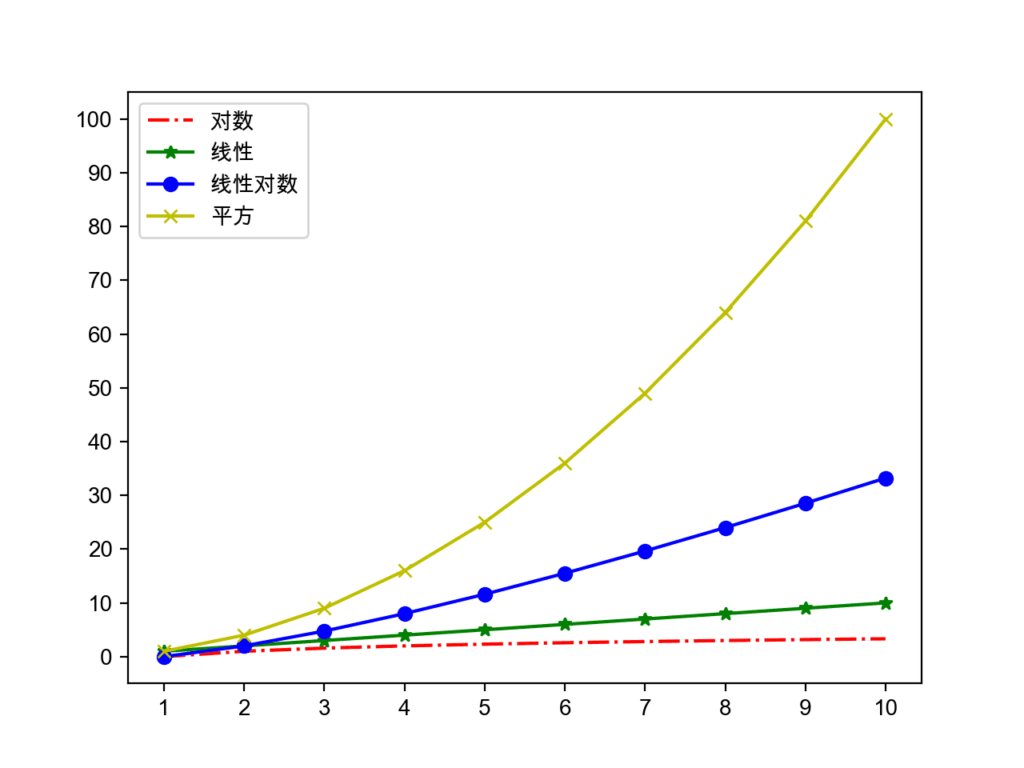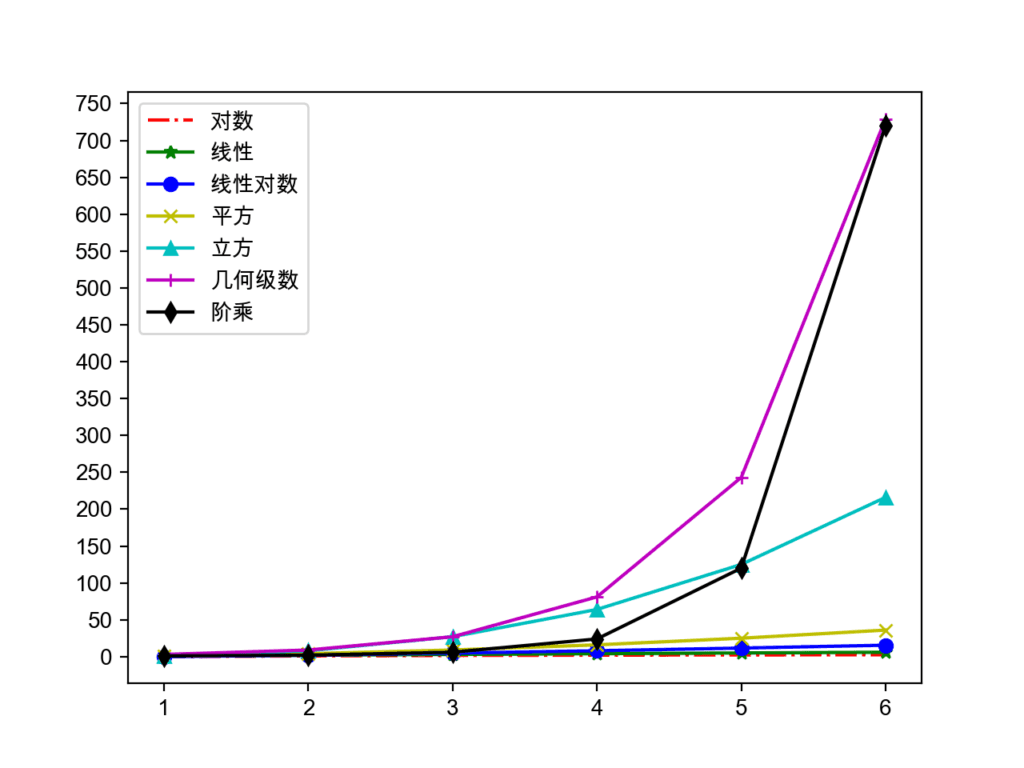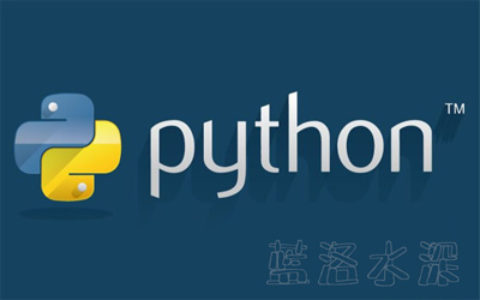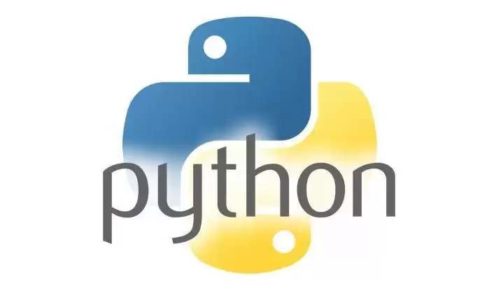Python语言进阶
数据结构和算法
算法:解决问题的方法和步骤
评价算法的好坏:渐近时间复杂度和渐近空间复杂度。
渐近时间复杂度的大O标记:
![]() – 对数线性时间复杂度 – 高级排序算法(归并排序、快速排序)
– 对数线性时间复杂度 – 高级排序算法(归并排序、快速排序)
![]() – 平方时间复杂度 – 简单排序算法(选择排序、插入排序、冒泡排序)
– 平方时间复杂度 – 简单排序算法(选择排序、插入排序、冒泡排序)
排序算法(选择、冒泡和归并)和查找算法(顺序和折半)
|
1 2 3 4 5 6 7 8 9 10 |
def select_sort(origin_items, comp=lambda x, y: x < y): """简单选择排序""" items = origin_items[:] for i in range(len(items) - 1): min_index = i for j in range(i + 1, len(items)): if comp(items[j], items[min_index]): min_index = j items[i], items[min_index] = items[min_index], items[i] return items |
|
1 2 3 4 5 6 7 8 9 10 11 12 13 14 15 16 17 18 |
def bubble_sort(origin_items, comp=lambda x, y: x > y): """高质量冒泡排序(搅拌排序)""" items = origin_items[:] for i in range(len(items) - 1): swapped = False for j in range(i, len(items) - 1 - i): if comp(items[j], items[j + 1]): items[j], items[j + 1] = items[j + 1], items[j] swapped = True if swapped: swapped = False for j in range(len(items) - 2 - i, i, -1): if comp(items[j - 1], items[j]): items[j], items[j - 1] = items[j - 1], items[j] swapped = True if not swapped: break return items |
|
1 2 3 4 5 6 7 8 9 10 11 12 13 14 15 16 17 18 19 20 21 22 23 24 |
def merge_sort(items, comp=lambda x, y: x <= y): """归并排序(分治法)""" if len(items) < 2: return items[:] mid = len(items) // 2 left = merge_sort(items[:mid], comp) right = merge_sort(items[mid:], comp) return merge(left, right, comp) def merge(items1, items2, comp): """合并(将两个有序的列表合并成一个有序的列表)""" items = [] index1, index2 = 0, 0 while index1 < len(items1) and index2 < len(items2): if comp(items1[index1], items2[index2]): items.append(items1[index1]) index1 += 1 else: items.append(items2[index2]) index2 += 1 items += items1[index1:] items += items2[index2:] return items |
|
1 2 3 4 5 6 |
def seq_search(items, key): """顺序查找""" for index, item in enumerate(items): if item == key: return index return -1 |
|
1 2 3 4 5 6 7 8 9 10 11 12 |
def bin_search(items, key): """折半查找""" start, end = 0, len(items) - 1 while start <= end: mid = (start + end) // 2 if key > items[mid]: start = mid + 1 elif key < items[mid]: end = mid - 1 else: return mid return -1 |
使用生成式(推导式)语法
|
1 2 3 4 5 6 7 8 9 10 11 12 |
prices = { 'AAPL': 191.88, 'GOOG': 1186.96, 'IBM': 149.24, 'ORCL': 48.44, 'ACN': 166.89, 'FB': 208.09, 'SYMC': 21.29 } # 用股票价格大于100元的股票构造一个新的字典 prices2 = {key: value for key, value in prices.items() if value > 100} print(prices2) |
说明:生成式(推导式)可以用来生成列表、集合和字典。
嵌套的列表
|
1 2 3 4 5 6 7 8 9 10 |
names = ['关羽', '张飞', '赵云', '马超', '黄忠'] courses = ['语文', '数学', '英语'] # 录入五个学生三门课程的成绩 # 错误 - 参考http://pythontutor.com/visualize.html#mode=edit # scores = [[None] * len(courses)] * len(names) scores = [[None] * len(courses) for _ in range(len(names))] for row, name in enumerate(names): for col, course in enumerate(courses): scores[row][col] = float(input(f'请输入{name}的{course}成绩: ')) print(scores) |
heapq、itertools等的用法
|
1 2 3 4 5 6 7 8 9 10 11 12 13 14 15 16 17 18 19 |
""" 从列表中找出最大的或最小的N个元素 堆结构(大根堆/小根堆) """ import heapq list1 = [34, 25, 12, 99, 87, 63, 58, 78, 88, 92] list2 = [ {'name': 'IBM', 'shares': 100, 'price': 91.1}, {'name': 'AAPL', 'shares': 50, 'price': 543.22}, {'name': 'FB', 'shares': 200, 'price': 21.09}, {'name': 'HPQ', 'shares': 35, 'price': 31.75}, {'name': 'YHOO', 'shares': 45, 'price': 16.35}, {'name': 'ACME', 'shares': 75, 'price': 115.65} ] print(heapq.nlargest(3, list1)) print(heapq.nsmallest(3, list1)) print(heapq.nlargest(2, list2, key=lambda x: x['price'])) print(heapq.nlargest(2, list2, key=lambda x: x['shares'])) |
|
1 2 3 4 5 6 7 8 |
""" 迭代工具 - 排列 / 组合 / 笛卡尔积 """ import itertools itertools.permutations('ABCD') itertools.combinations('ABCDE', 3) itertools.product('ABCD', '123') |
collections模块下的工具类
|
1 2 3 4 5 6 7 8 9 10 11 12 13 |
""" 找出序列中出现次数最多的元素 """ from collections import Counter words = [ 'look', 'into', 'my', 'eyes', 'look', 'into', 'my', 'eyes', 'the', 'eyes', 'the', 'eyes', 'the', 'eyes', 'not', 'around', 'the', 'eyes', "don't", 'look', 'around', 'the', 'eyes', 'look', 'into', 'my', 'eyes', "you're", 'under' ] counter = Counter(words) print(counter.most_common(3)) |
常用算法:
- 穷举法 – 又称为暴力破解法,对所有的可能性进行验证,直到找到正确答案。
- 贪婪法 – 在对问题求解时,总是做出在当前看来
- 最好的选择,不追求最优解,快速找到满意解。
- 分治法 – 把一个复杂的问题分成两个或更多的相同或相似的子问题,再把子问题分成更小的子问题,直到可以直接求解的程度,最后将子问题的解进行合并得到原问题的解。
- 回溯法 – 回溯法又称为试探法,按选优条件向前搜索,当搜索到某一步发现原先选择并不优或达不到目标时,就退回一步重新选择。
- 动态规划 – 基本思想也是将待求解问题分解成若干个子问题,先求解并保存这些子问题的解,避免产生大量的重复运算。
穷举法例子:百钱百鸡和五人分鱼。
|
1 2 3 4 5 6 7 8 9 10 11 12 13 14 15 16 17 18 19 20 21 22 23 24 25 26 |
# 公鸡5元一只 母鸡3元一只 小鸡1元三只 # 用100元买100只鸡 问公鸡/母鸡/小鸡各多少只 for x in range(20): for y in range(33): z = 100 - x - y if 5 * x + 3 * y + z // 3 == 100 and z % 3 == 0: print(x, y, z) # A、B、C、D、E五人在某天夜里合伙捕鱼 最后疲惫不堪各自睡觉 # 第二天A第一个醒来 他将鱼分为5份 扔掉多余的1条 拿走自己的一份 # B第二个醒来 也将鱼分为5份 扔掉多余的1条 拿走自己的一份 # 然后C、D、E依次醒来也按同样的方式分鱼 问他们至少捕了多少条鱼 fish = 6 while True: total = fish enough = True for _ in range(5): if (total - 1) % 5 == 0: total = (total - 1) // 5 * 4 else: enough = False break if enough: print(fish) break fish += 5 |
贪婪法例子:假设小偷有一个背包,最多能装20公斤赃物,他闯入一户人家,发现如下表所示的物品。很显然,他不能把所有物品都装进背包,所以必须确定拿走哪些物品,留下哪些物品。
| 名称 | 价格(美元) | 重量(kg) |
|---|---|---|
| 电脑 | 200 | 20 |
| 收音机 | 20 | 4 |
| 钟 | 175 | 10 |
| 花瓶 | 50 | 2 |
| 书 | 10 | 1 |
| 油画 | 90 | 9 |
|
1 2 3 4 5 6 7 8 9 10 11 12 13 14 15 16 17 18 19 20 21 22 23 24 25 26 27 28 29 30 31 32 33 34 35 36 37 38 39 40 41 42 43 44 45 46 47 48 49 50 |
""" 贪婪法:在对问题求解时,总是做出在当前看来是最好的选择,不追求最优解,快速找到满意解。 输入: 20 6 电脑 200 20 收音机 20 4 钟 175 10 花瓶 50 2 书 10 1 油画 90 9 """ class Thing(object): """物品""" def __init__(self, name, price, weight): self.name = name self.price = price self.weight = weight @property def value(self): """价格重量比""" return self.price / self.weight def input_thing(): """输入物品信息""" name_str, price_str, weight_str = input().split() return name_str, int(price_str), int(weight_str) def main(): """主函数""" max_weight, num_of_things = map(int, input().split()) all_things = [] for _ in range(num_of_things): all_things.append(Thing(*input_thing())) all_things.sort(key=lambda x: x.value, reverse=True) total_weight = 0 total_price = 0 for thing in all_things: if total_weight + thing.weight <= max_weight: print(f'小偷拿走了{thing.name}') total_weight += thing.weight total_price += thing.price print(f'总价值: {total_price}美元') if __name__ == '__main__': main() |
分治法例子:快速排序。
|
1 2 3 4 5 6 7 8 9 10 11 12 13 14 15 16 17 18 19 20 21 22 23 24 25 |
""" 快速排序 - 选择枢轴对元素进行划分,左边都比枢轴小右边都比枢轴大 """ def quick_sort(origin_items, comp=lambda x, y: x <= y): items = origin_items[:] _quick_sort(items, 0, len(items) - 1, comp) return items def _quick_sort(items, start, end, comp): if start < end: pos = _partition(items, start, end, comp) _quick_sort(items, start, pos - 1, comp) _quick_sort(items, pos + 1, end, comp) def _partition(items, start, end, comp): pivot = items[end] i = start - 1 for j in range(start, end): if comp(items[j], pivot): i += 1 items[i], items[j] = items[j], items[i] items[i + 1], items[end] = items[end], items[i + 1] return i + 1 |
回溯法例子:骑士巡逻。
|
1 2 3 4 5 6 7 8 9 10 11 12 13 14 15 16 17 18 19 20 21 22 23 24 25 26 27 28 29 30 31 32 33 34 35 36 37 38 39 40 41 42 43 44 45 |
""" 递归回溯法:叫称为试探法,按选优条件向前搜索,当搜索到某一步,发现原先选择并不优或达不到目标时,就退回一步重新选择,比较经典的问题包括骑士巡逻、八皇后和迷宫寻路等。 """ import sys import time SIZE = 5 total = 0 def print_board(board): for row in board: for col in row: print(str(col).center(4), end='') print() def patrol(board, row, col, step=1): if row >= 0 and row < SIZE and \ col >= 0 and col < SIZE and \ board[row][col] == 0: board[row][col] = step if step == SIZE * SIZE: global total total += 1 print(f'第{total}种走法: ') print_board(board) patrol(board, row - 2, col - 1, step + 1) patrol(board, row - 1, col - 2, step + 1) patrol(board, row + 1, col - 2, step + 1) patrol(board, row + 2, col - 1, step + 1) patrol(board, row + 2, col + 1, step + 1) patrol(board, row + 1, col + 2, step + 1) patrol(board, row - 1, col + 2, step + 1) patrol(board, row - 2, col + 1, step + 1) board[row][col] = 0 def main(): board = [[0] * SIZE for _ in range(SIZE)] patrol(board, SIZE - 1, SIZE - 1) if __name__ == '__main__': main() |
动态规划例子1:斐波拉切数列。(不使用动态规划将会是几何级数复杂度)
|
1 2 3 4 5 6 7 8 9 10 11 12 13 |
""" 动态规划 - 适用于有重叠子问题和最优子结构性质的问题 使用动态规划方法所耗时间往往远少于朴素解法(用空间换取时间) """ def fib(num, temp={}): """用递归计算Fibonacci数""" if num in (1, 2): return 1 try: return temp[num] except KeyError: temp[num] = fib(num - 1) + fib(num - 2) return temp[num] |
动态规划例子2:子列表元素之和的最大值。(使用动态规划可以避免二重循环)
说明:子列表指的是列表中索引(下标)连续的元素构成的列表;列表中的元素是int类型,可能包含正整数、0、负整数;程序输入列表中的元素,输出子列表元素求和的最大值,例如: 输入:1 -2 3 5 -3 2 输出:8 输入:0 -2 3 5 -1 2 输出:9 输入:-9 -2 -3 -5 -3 输出:-2
|
1 2 3 4 5 6 7 8 9 10 11 12 13 |
def main(): items = list(map(int, input().split())) size = len(items) overall, partial = {}, {} overall[size - 1] = partial[size - 1] = items[size - 1] for i in range(size - 2, -1, -1): partial[i] = max(items[i], partial[i + 1] + items[i]) overall[i] = max(partial[i], overall[i + 1]) print(overall[0]) if __name__ == '__main__': main() |
本文来自这个系列长期转载Python-100-Days ,本文观点不代表蓝洛水深立场,转载请联系原作者。



 微信扫一扫
微信扫一扫  支付宝扫一扫
支付宝扫一扫 

